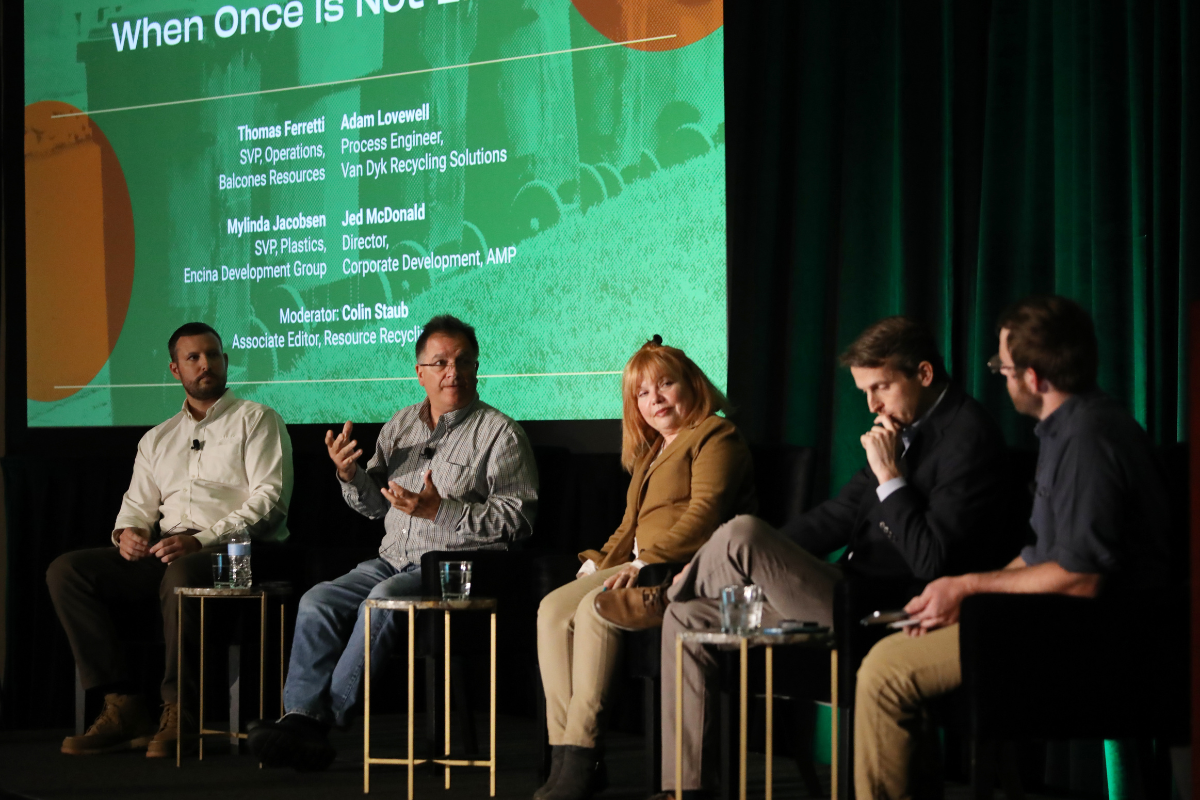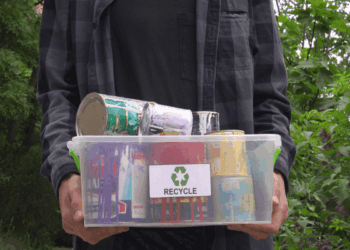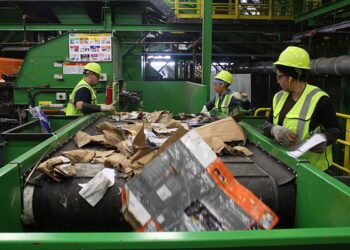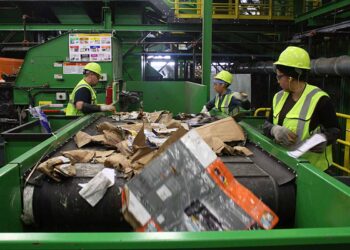With MRFs becoming ever more sophisticated and AI and robotics providing customizable levels of materials sortation, chemical recycling feedstock provides the most promising end market for secondary sorting, according to panelists at the recent Resource Recycling Conference.
And although the number of secondary sorting facilities has decreased, said panelist Adam Lovewell, process engineer at Van Dyk Recycling Solutions, “I think that we’re seeing the emergence of secondary sorting facilities because it’s a business that people can make money from. It might not be as much as the MRF, but there’s still money to be made other than just sending it to the landfill.”
Secondary sorting is the process of culling further value from bales that have already undergone a primary sort at a MRF.
“We’re serving waste and recycling companies that want to get their hands on more tons and grow their business,” said Jed McDonald, director of corporate development at robotics company AMP, which sells recycling technology. The company also announced in November it was partnering with hauler Waste Connections to build a MRF in Colorado, AMP’s first ground-up investment.
In addition to the development of end markets, the practicalities of primary sorting help ensure that secondary sorting doesn’t become extinct, said Tom Ferretti, senior vice president of operations at Balcones Recycling. “I don’t think the economics are going to work” for designing a system that eliminates the usefulness of a secondary sort, he said. However, not every waste handler can afford a system costing $10 million to $30 million.
“So you get very good at what you do with what you have.”
Chemical recycling requires specialized feedstock
Although public perception may be that chemical recycling operations are burning trash, Mylinda Jacobsen, senior vice president of plastics at chemical recycling firm Encina Development Group, pointed out that they have feedstock specifications like any plant and are buying a curated blend from secondary sorters rather than from MRFs. Encina is a chemical recycling business based near Houston.
“It’s not a landfill,” she said. “It’s a specialized beast that can take some streams and maybe upgrade them a little bit, but you can’t just put anything in there. You have to understand what’s coming in and look even like what’s going to change in two years, five years, 10 years,” considering what equipment will be needed in the future to handle changing material streams.
“Secondary sorting is a front end for a chemical recycler,” she said, adding that chemical recycling facilities are trying to extract maximum value from streams that have already had most of the value taken out. In addition, the massive volumes required for chemical recycling aren’t going to come from what the MRF produces, she said, and price points are different than for mechanical recycling operations. “You’re not competing in that same space for materials.”
The growing number of chemical recycling companies struggle with uncertainty over their feedstock supply, Lovewell said. “They have their feedstock that they were able to source this week, but next week it will be from somewhere else, and it’s very difficult to predict.”
They require infrastructure to process feedstock streams from anywhere, he said, from MRF residuals to carpet backing. And although “there’s a little bit of a doom-and-gloom conversation going on” surrounding the future of secondary recycling, developing end markets – including chemical recycling – will drive secondary sorting.
McDonald concurred, saying that helping chemical recycling operators achieve the desired feedstock specifications has “unlocked downstream of us a new offtake that adds to the sellable things we can precisely sort.”
AMP also views secondary sorting from a tolling perspective, in particular for chemical recycling, which needs a certain feedstock that’s easier and cheaper with technology like AMP’s, McDonald said. Tolling typically entails outsourcing an aspect of a company’s manufacturing process to a third party that can perform it more efficiently or economically than the manufacturer itself, without investing capital.
Nevertheless, Jacobsen pointed out that not every residual stream is suitable for secondary sorting. “You really need to do your homework on them first and kind of look at patterns and what is your kind of average over time that you’re going to recover, and certainly make sure that there are markets available on where to sell some of this stuff,” she said. Due to regional differences in material streams, she continued, “you have to pick where you’re going to be very carefully as well.”
Lovewell added that “it’s very hard to justify these secondary sorting facilities unless there are markets for those materials, unless you have enough material to justify building a plant that can handle that. And all that requires being in the vicinity of where this operation is going.”
Extracting value remains paramount
Ultimately the panelists agreed that the primary goal of secondary sorting was to reduce the tonnage headed for landfills, and to extract as much value as possible from consumer material streams.
At the MRF level, “we keep on mining and stripping that value out of that waste bill,” said Ferretti, adding that he didn’t want to leave behind any value in a bale. “So my goal is to, unfortunately, hurt the secondary sorter.
“I don’t want to give up one PET bottle,” he said. “I don’t want to give up one HDPE bottle. My job is to extract as much value on one pass of that material coming in that front door where it is no more than landfill. Landfill costs are massive. I want to reduce that.”
In addition, brand owners face mandates for recycled content in packaging or have made what may be “unrealistic” public announcements surrounding PCR targets in packaging, McDonald said. “So they’ll basically take any amount of net new tons they can get their hands on, meaning they’ll almost finance a full facility for us just to guarantee themselves the offtake,” such as clear PET.
Because the MRF’s goal is to derive maximum value from bales, said Jacobsen, “if you’re anybody in the secondary sorting space, you have to look beyond the MRF.”


























